Bird netting is simply a plastic or fiber mesh net that is spread over a plant for the purpose of preventing access by birds. The openings in common nets are typically 5/8 or 3/4 of an inch square, too small for any bird's body to penetrate. It is very effective and very economical for typical bird pests. Heavy duty netting of 1" or 2" squares is more expensive, but will stand up to larger, heavier, and persistent birds.
A simple plastic, metal, or wood frame is necessary to drape the netting over. If you lay the netting directly on the plants you want to protect, the birds will be able to stand on it and peck through the openings, even the small ones. When supported by a frame, the netting acts as an efficient obstacle.
For low plants the frame just needs to be higher than the plants. In my strawberry bed I bent five-feet long sections of black PVC tubing between the sides; the ends of the tubing are inserted over 18-inch long pieces of metal rebar sunk into the soil. A length of bird netting covers the entire bed from end to end. It's important that all the sides are enclosed. I use 3-inch metal garden staples to hold the netting flush with the ground.
The white PVC pipe that I used to make mini greenhouses is ideally suited to support bird netting (see my blog, "Extending Your Growing Season with Mini Geenhouses"). In early spring it supports plastic sheets to warm the bed, in late summer it supports bird netting to protect your harvest, in the fall it supports plastic again to extend the season.
Taller or vining plants need larger framing. For my raspberries I built a barrier of metal fenceposts and four-feet high fencing. This is a strong frame primarily to keep the deer out, but it serves a secondary purpose of supporting bird netting over the top. The deer will eat the tips of the raspberries before the flowers develop and the birds will eat the fruit so both have to be dealt with. It's a fully enclosed box that I can open but the birds and deer can't.
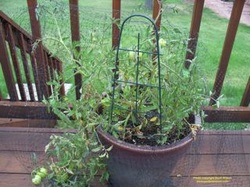
On my deck I wrapped a piece of netting around a tomato plant in a pot. My Yellow Lab, Lily, was fond of pulling off the green tomatoes to play with (see my blog, "Dogs and Tomatoes"). The netting now keeps her away from the tomatoes, allowing them time to ripen. Netting is also effective against cats, squirrels, and other small animals.
At some point I imagine a roof of netting over my entire garden. I've seen similar setups by other gardeners. A fully enclosed garden may seem extreme and sterile but insects can still get through the netting for pollination and it allows sun and rain in. I'm getting annoyed at the number of tomatoes, beans, squash, and corn that fall prey to birds, especially those @*%#! magpies, and a single roof of netting seems like a nice plan.
For now I cover a few of the beds and trees. I could cover the tomatoes but the indeterminate varieties grow tall and beyond the confines of the bed. I've tried netting before but the tomato vines grow through it and become a tangled mess. That makes harvesting the ripe tomatoes quite difficult. I know selective pruning and a very large net support system can solve the problem, but I'm not ready to put that much effort into the solution.
For garden beds with compact and controlled plantings, bird netting can easily protect the fruit until ready for human harvest. It lasts for years and can be reused. I try to label the netting when I roll it up at the end of the season so I know which bed it is cut to fit. A roll 100' feet long is enough to cover about eight of my beds, allowing for overlap on the ends.
I don't put netting over my flower beds or bushes. I want the hummingbirds to feed on the flower nectar and don't mind birds eating stray seeds. They rarely damage any of those beds. If the deer become too much of a nuisance it may be necessary to shelter some plants, but I don't have that concern yet. For birds, unless you're trying to protect a prized flower or plant, netting is seldom needed outside a vegetable garden.
If you have a bird problem, or any other large garden pest, and haven't tried bird netting, consider it. For little cost and effort your problem could be solved.
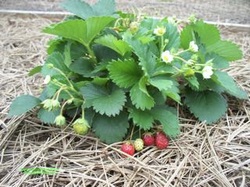
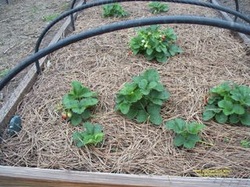
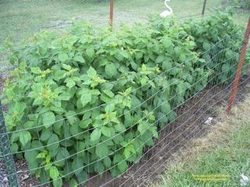
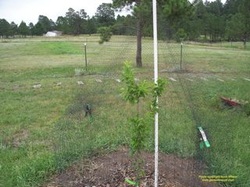
 RSS Feed
RSS Feed